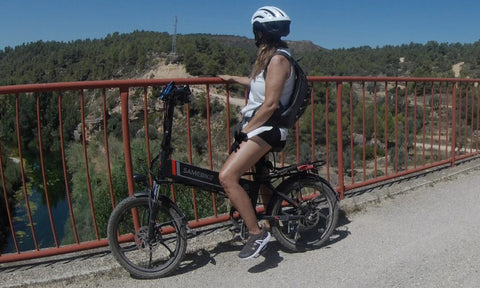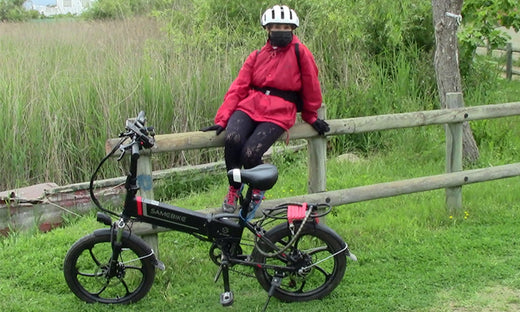Electric Bike Speed Limit in the U.S. Explained
Electric motorbikes are common in the United States. It's possible that you may have seen or heard about them. Besides seeing them, you might own one or have an interest in the electric bike industry. The United States has seen an increase in the number of E-bike owners. Experts links this increase to various factors. What are the top factors that have led to the increase in electric bikes? Electric bikes are the best alternative mode of transportation. They offer the best option to get outdoors and stay active. More so, these bikes can help you save more resources compared to driving your vehicle to attend to your daily routine.
Despite the increasing ownership and uses, many individuals have inadequate knowledge of the laws and regulations guiding these bikes in different states. Failure to understand these laws might compromise your safety and land you in trouble with the authorities. For instance, failure to abide by the helmet laws and e-bike speed limit for your state leads to legal fines. Besides getting in trouble with law enforcers, not following the laws and guidelines may compromise your safety in case you lose control and crash. Thus, it's important to take time to research the speed limit and bike helmet laws. Understanding these laws helps you protect yourself and other road users when riding. Let's get started.

Speed Limit
Before understanding the speed limit laws, it's important to understand how the country defines electric bikes. The U.S. Code Title 15. Chapter 47. Section 2085(d) legally defines a low-speed electric bike as a two-or three-wheeled vehicle having fully operable pedals. In addition, it has an electric motor of less than 1 horsepower and 750 watts. The e-bike should have a maximum speed of less than 20mph on a paved level surface, while an operator weighing 170 pounds is riding and motor-powered system.
Most states in the United States have adopted the three-class system for describing the levels of e-bikes. Let's look at these classes:
- Class 1 - Pedal assist; 20mph maximum assisted speed
- Class 2 - throttle assist only; 20mph maximum motor-powered speed
- Class 3 - pedal assist only; 28mph maximum assisted speed
The different states regulate class 1 and 2 e-bikes as regular bicycles. When having these e-bikes, you'll have to follow the same rules and use the same infrastructure and paths as bicycle users.
While class 3 e-bikes can operate at higher speeds, they require additional equipment and have extra regulations. In addition, the law still considers them bicycles.
Currently, the U.S. Federal Law states that class 3 e-bikes should have a minimum of 16 years old when operating. Besides the age limitations, you require a helmet to ride these bikes. Nevertheless, the laws restrict you from using standard bike paths. The law allows class 3 e-bikes to move with a speed of up to 28mph as Consumer Product Safety Commissions Act allows e-bikes with foot pedaling and using motor power simultaneously to move faster than 20mph.

Pedal Requirements
Regardless of the state you visit or reside in, it's mandatory to have fully operational pedals on your electric bike. What does it mean with fully operational pedals? Your bike must be able to use pedals that you can power at any time. While you don't have to use the pedals all the time, these parts need to be operating fully.
Motor Power Size
The law requires that all three e-bike classes have 1 motor with 750 watts (1 horsepower) or less. This regulation comes as good news to Samebike ebikes users. It's the perfect amount of power your bike needs to get you to your destination at a safe speed. Whether on your leisurely summer activities, enjoying thrills on the all-terrain trail, or commuting on the bike lane of a busy highway, you'll be riding your Samebike e-bike with confidence. These bikes have the appropriate motor power size in line with U.S. laws and requirements.
Helmet Laws
Nolo.com reveals that states in the U.S. have different guidelines regarding helmet requirements when riding your electric bike. You can research the time or whether you require a helmet while enjoying your ride. Regardless of the helmet laws, it's always good to wear a helmet. Why is a helmet important when riding? Wearing a comfortable and reliable helmet helps protect yourself from injuries in an accident. In addition, remember each state has local helmet laws you must follow. You can always check with your state or local laws to get updates on the latest helmet laws.
Safety Passing Laws
Adhering to the right safe passing procedure allows you and other road users to enjoy the road or path. Despite the state safe passing laws variations, you can find the full review in this section. While riding your e-bike, it's always good to check your surrounding, other cyclists, and nearby motor vehicles. How do you ensure that you and other road users are safe as you pass? Ensure you pass the other riders or cyclists on the left and alert them as you approach. You use accessories like bells and bike mirrors to notify other road users that you're approaching. Ensure that you wear reflective or bright gear as you ride on narrow stretches to make other drivers or riders see you and provide extra space.

Generally, the law requires you to give other road users, including pedestrians and riders, a minimum of 3 feet when passing. Furthermore, automobiles should observe the same distance of safety or slow down when passing bicyclists. Nonetheless, you shouldn't assume that all automobile drivers will pay attention to this safe distance. Some distractions from other cars and phones may make some drivers fail to provide safe distance. What can you do in such a scenario? The best thumb rule is to avoid passing anyone or vehicles that can result in a dangerous scene for you and other road users.
Conclusion
With the guidelines above, you must have a comprehensive understanding of electric bike regulations and laws. The increased awareness and proper education enhance fun and safety when riding your e-bike. Nonetheless, these regulations and laws may change from time to time. Although the Federal government outlines e-bike helmet laws, e-bike speed limitless, and other regulations, most states may have slightly varying enforcements and interpretations of these laws. It'll be good to consult or research the latest state and local laws.




































Tell me how to take the speedlimter off the xwc05 750 watt I won’t tell anyone else bro please it’ll stay between me and you
Leave a comment